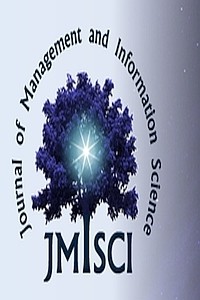Strategic Utility Analysis of Special Operations Forces Applying Game Theory
Strategic Utility Analysis of Special Operations Forces Applying Game Theory
As a strategic asset, special-operations forces (SOF) are trained, equipped, and organized to combat irregular threats. The employment of SOF is under heavy discussion among academics, decision makers, and the SOF community. This article addresses the following questions: 1) How do SOF achieve strategic effects as a policy tool of national strategy; and 2) In which types of roles and missions do SOF’s strategic value rest? This study claims that to provide strategic utility, SOF must operate independently, or at least supported by conventional forces, executing both direct-action missions and indirect-action missions. SOF’s indirect-action missions are comparatively more important than their direct-action skills. The authors applies game theory to all strategic environments, peacetime, conflict, and conventional war. Using a game-theory approach, this article presents the decrease in SOF strategic value when they are improperly employed. Military leaders and policy makers must employ SOF according to their capabilities and limitations.
Keywords:
Strategic Utility, Special Operations, Special Operations Command Department of Defence, Game Theory.,
___
- Aumann, R. J. (Ed.). (1994). Handbook of game theory with economic applications. 2 (Vol. 2). Elsevier.
- Consortium for Mathematics and Its Applications. (1997). For All Practical Purposes. Game Theory: The Mathematics of Competition (pp. 561-562, 579-587) . New York:W. H. Freeman & Company.
- Engelbrecht, G. N. (1999). On the Relevance of Game Theory in Strategic Thinking. Scientia Militaria: South African Journal of Military Studies, 29, 36-52.
- Eric, P. (2009). The Strategic Utility of U.S. Navy Seals. Monterey: Naval Postgraduate School, 7-9.
- Friedman, J. W. (1986). Game theory with applications to economics (pp. 209-216). New York: Oxford University Press.
- Gray, C. (1996) Explorations in Strategy (pp. 143-164). Westport, CT: Greenwood Press.
- Kakutani, S. (1941). A generalization of Brouwer’s fixed point theorem. Duke mathematical journal, 8(3), 457-459. Kraag, A., and Larssen, B. (2010). The “Start Game” of Coalitions. DA 4410 Models of Conflict Student Pamphlet, 8-10.
- Loomis, L. H. (1946). On a theorem of von Neumann. Proceedings of the National Academy of Sciences of the United States of America, 32(8), 213.
- Mahla, P., and Riga, C. (2003). An Operational Concept For The Transformation Of SOF into a Fifth Service. Monterey: Naval Postgraduate School, 1-3.
- Myerson, R. B. (2013). Game theory: analysis of conflict.
- Harvard university press. Neillands, R. (1997). In the Combat Zone: Special Forces since 1945 (pp. 1). London: Weidenfeld and Nicolson.
- Neumann, J., and Morgenstern, O. (1953) Theory of
- Games and Economic Behavior (pp. 85-93). Princeton: Princeton University Press. Neumann, J. V. (1928). Zur theorie der gesellschaftsspiele. Mathematische Annalen, 100(1), 2953
- Ohad, L. (2010). Worth the Bother? Israeli Experience and the Utility of Special Operations Forces. Contemporary Security Policy, 31:3, 513.
- Osborne, M. J. (1994). A course in game theory.
- Cambridge, Mass.: MIT Press. Rothstein, H. (2006). Afghanistan &The Troubled Future of Unconventional Warfare (pp. 102). Annapolis, MD: Naval Institute Press. The term ‘hyper-conventional’ is used by Dr. Rothstein to describe the units in SOF, which largely operate direct-action missions.
- Schelling, T. (1981). The Strategy of Conflict (pp. 119161). Cambridge, Massachusetts: Harvard University Press.
- Shubik, M. (2006). Game theory in the social sciences: Concepts and solutions.
- Sindik, J., & Vidak, N. (2008). Application of game theory in describing efficacy of decision making in sportsman's tactical performance in team sports.Interdisciplinary
- Description of Complex Systems, 6(1), 53-66. Smith, J. M. (1993). Evolution and the Theory of
- Games (pp. 202-215). Springer US. Šporčić, M., Landekić, M., Lovrić, M., & Martinić, I. (2011). Planning and Decision Making Models in
- Forestry. Croatian Journal of Forest Engineering,32(1), 455-4 Straffin, P. (2002). Game Theory and Strategy (pp. 85-92).
- Washington DC:The Mathematical Association of America. Tucker, D., and Lamb, C. (2007). United States Special
- Operations Forces (pp. 174-178). New York, Columbia University Press.
- Başlangıç: 2013
- Yayıncı: Kerim GÖZTEPE
